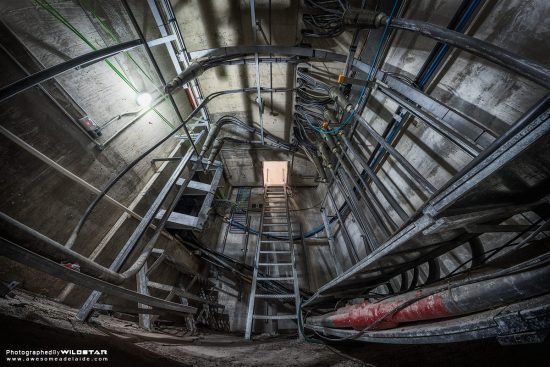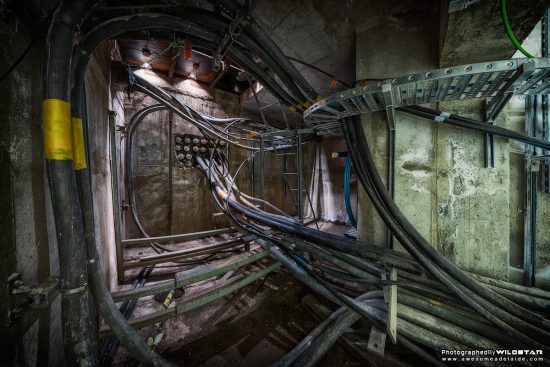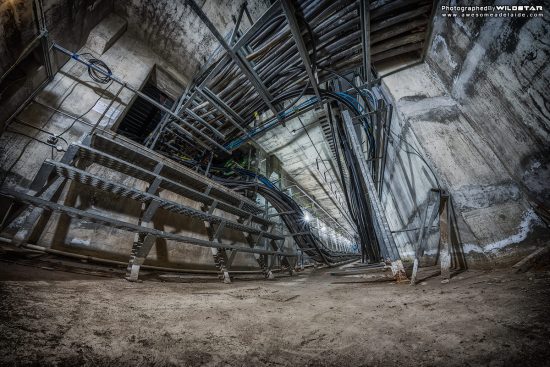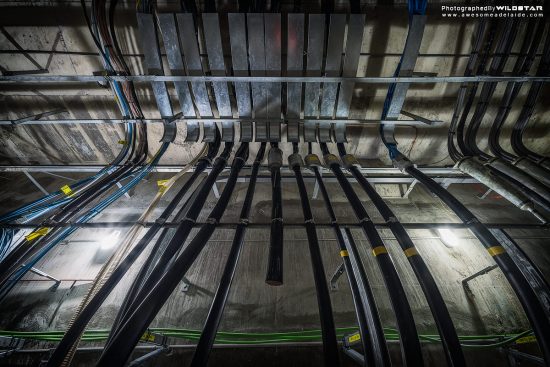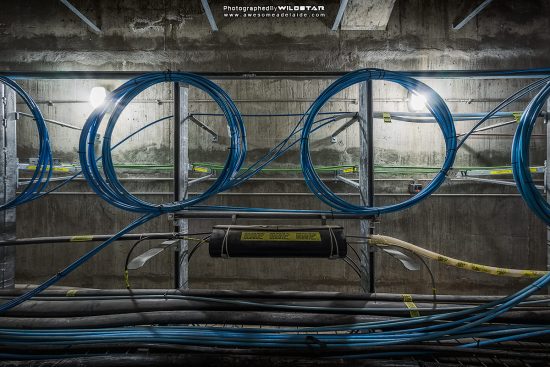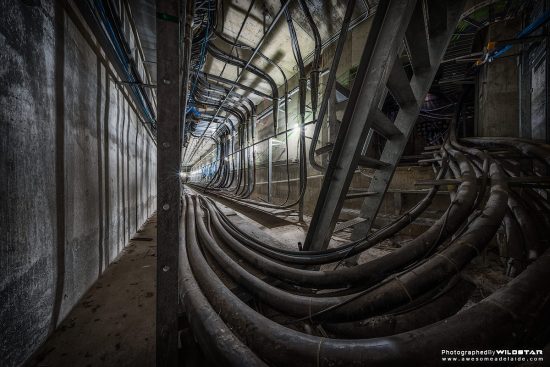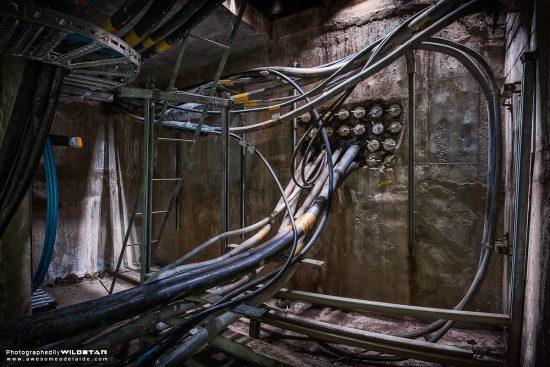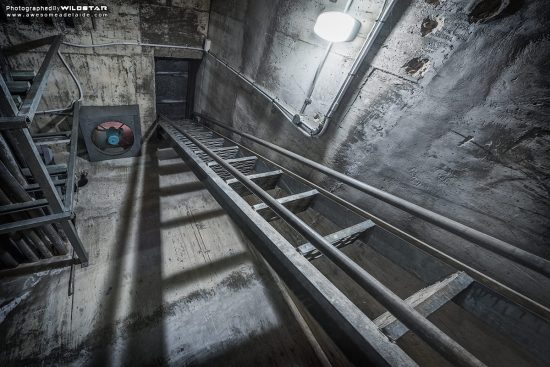Early Adelaide telephone lines were copper wire. They traversed the city mounted on poles along the street, leading from your home (or place of business) all the way back to the telephone exchange. As you’d imagine, city telephone exchanges had a mass of incoming wires.
As the amount of customers grew, so did the amount of wires. Extra cross-arms had to be added to telephone poles to support more wires. They were extremely noisy in the wind, ugly, and broke during extreme weather events. Repairs were costly and took a very long time.
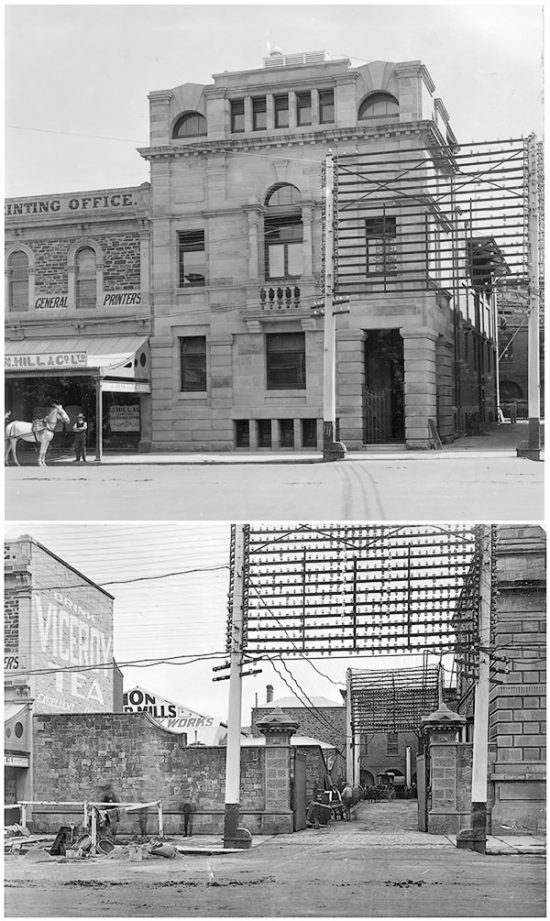
Bottom: Adelaide Telephone Exchange Back Entrance c.1909.
Photos courtesy State Library of South Australia.
The invention of the cable helped! Individual wires were grouped together and covered in a waterproof sheath. This allowed the wires to be placed underground, into tunnels, solving the problems associated with above-ground lines. Most cities have large cable tunnels under the main roads and footpaths, and these cable tunnels are still in use today.
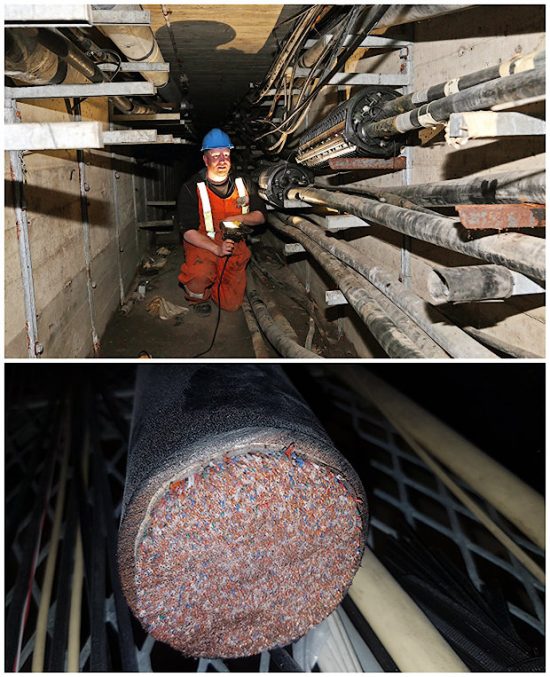
Bottom: A cut 1000-pair-cable showing the individual copper wiring.
Incoming cables from the cable tunnels are brought up from the underground tunnels into the exchange. The wires are broken out of their sheath and each pair of wires are terminated at a set of terminals on a Main Distribution Frame (MDF). The MDF also carried fuses which allowed lines to be connected or disconnected, as well as tested for faults.
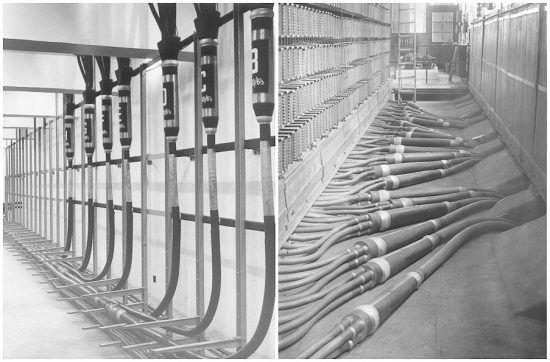
Right: Cables from the cable chamber below connecting to the Main Distribution Frame (MDF).
From there, lines are connected to sophisticated digital switching computers that, when required, connect your line to phones locally, interstate and around the world.




